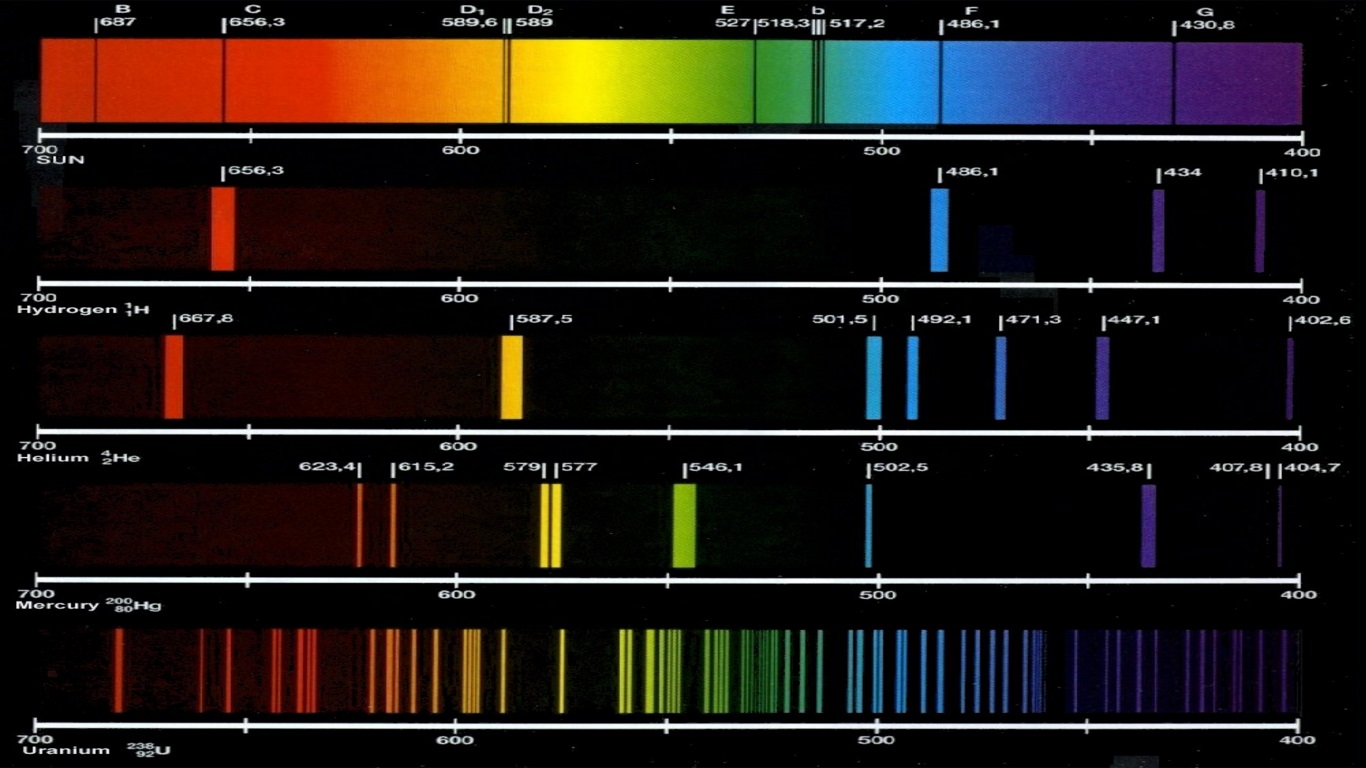
When an electron is excited, by heart or electrical discharge, it jumps to a higher energy level. By the quantum mechanical theory, a bounded electron can only occupy a set of states centered on the nucleus, and each state corresponds to a specific energy level. The electrons of an atom are bounded to the nucleus by the electromagnetic force. As well known, the atom is compounded by a nucleus with positive (protons) and neutral (neutrons) charges surrounded by a cloud of negative charges (electrons). The specific wavelengths emitted by the gas are related to their atomic structure. This is a technique very important in astronomy where scientists use to analyze the properties of distant objects, like their chemical elements. That way, it is possible to use the spectrum analyze to identify the composition of material. Scientist found that each element of periodic table has a unique set of spectral lines, as a signature of the element. This means that a heated gas emits light in just some specific wavelength. The spectrum of the heated gas was discrete lines or spectra lines. In 1850s, Anders Jonas Angstrom observed that the light emitted by a high heated gas did not have a continuum spectrum, like white light, when it passes through a prism. This was the beginning of the Spectrum Analyze Technique. In the 19 th century, scientist discovered that they could use the light emitted by heated or electrical discharged materials to analyze their properties. The table below shows the range of wavelength for each of seven colors of the rainbow. The result is that red light bends less sharply than violet as it passes through the prism, creating a spectrum of colors. The decomposition of the white light in different colors results from different wavelengths, as a consequence, they move at different speeds in the prism, with red light moving faster than violet. This means that the white light is formed by the combination all visible colors. In sequence of this experiment, Newton combined those colored beams in another prism which resulted in another white light beam. Newton classified this spectrum in a range of seven different colors (Red, Orange, Yellow, Green, Bleu, Indigo and Violet). The emission lines are thick because the spectrograph slit was opened to 22.In the 1670s, Isaac Newton, during optical experiments observed that a beam of white light was decomposed in a continuum spectrum of all visible colors, like a rainbow, when it pass through a prism. The brightest yellow emission line is 5852.4879. The IRIS emission lines and the plot were screen captured and reduce by half for the below image.įirst bright green emission line is 5400.5618.


The night light is placed in front of the spectrograph lens. The GE Neon Night Light 58417 is used and it plugs into 120 VAC green extension cord. The neon emission lines provide known spectrum wavelengths.


 0 kommentar(er)
0 kommentar(er)
